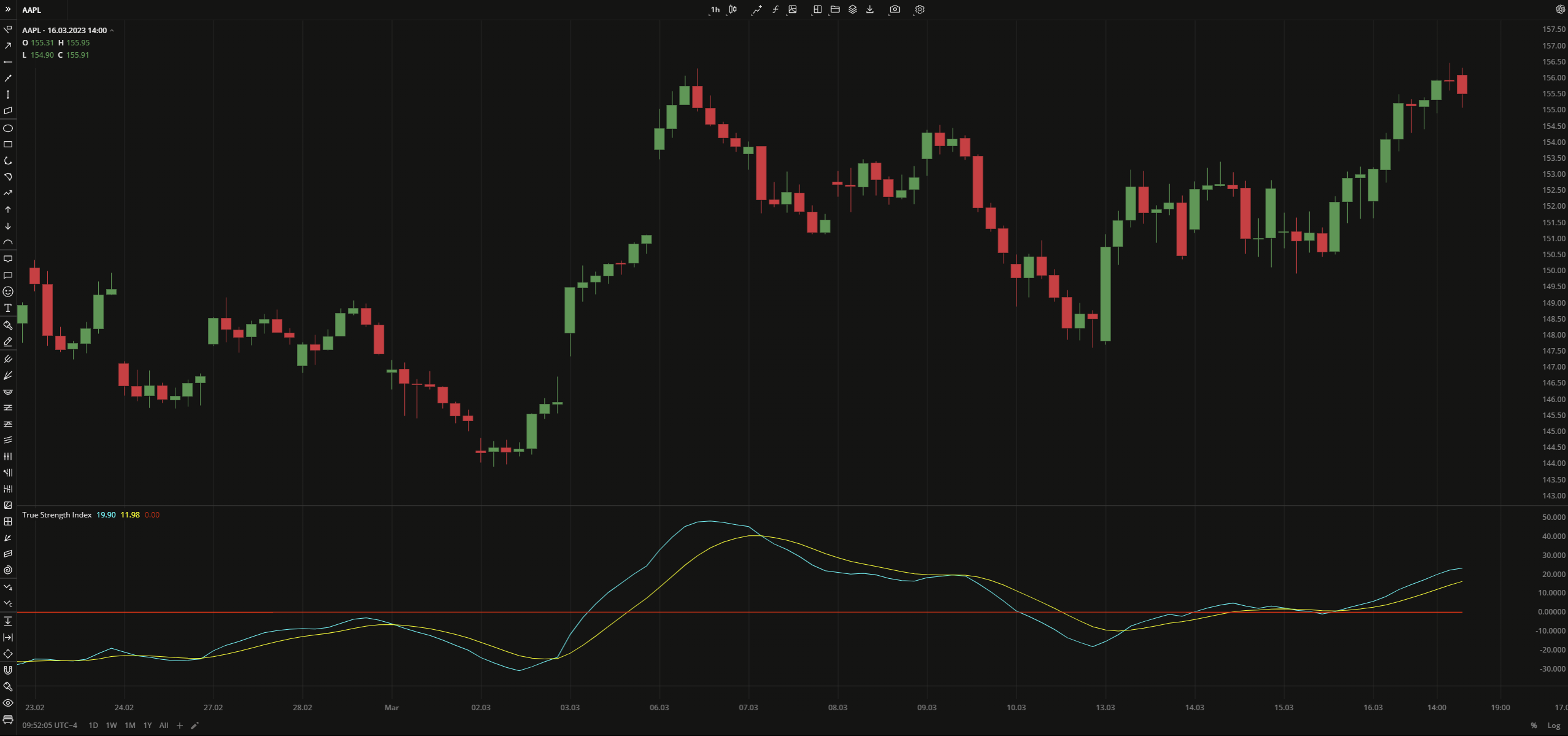- DarkLight
True Strength Index (TSI)
- DarkLight
True Strength Index (TSI) is a momentum oscillator used to identify trends and reversals. Both TSI and signal lines fluctuate on the scale from -40 to +40 determining a downtrend and uptrend when TSI above or below zero respectively. When TSI crosses above the signal line it can be used as a buy signal, and when it crosses below, a sell signal.
TSI = 100 x EMAs2(EMAs1(PM)) / (EMAs2(EMAs1(|PM|))
where:
EMA – Exponential Moving Average
PM – Pricei - Pricei-1
|PM| – Absolute value of PM
EMAs1 – the long period EMA
EMAs2 – the short period EMA
 True Strength Index
True Strength IndexINPUTS
| Price |
|---|
The following data sources are available for the price:
|
| Input | Description |
|---|---|
| LongLength | The number of bars used in calculation of the long-period EMA |
| ShortLength | The number of bars used in calculation of the short-period EMA |
| SignalLength | The number of bars used in calculation of signal line |
| Average |
|---|
The following Moving Average types are available for calculations:
|
PLOTS
The plot renders the data you are working with on the chart. You can show/hide a plot by clicking the corresponding item in the settings. Every plot has a set of basic settings that you can change: color, weight, and type.
| Plot | Description |
|---|---|
| TSI | The True Strength Index plot |
| Signal | The signal line |
| Zero | The zero level |
| Color |
|---|
Click the color rectangle under the plot's name to open the palette. Use the slider at the bottom to set the opacity of the color.  Palette PaletteTo create a custom color:
The custom-created colors are added to your palette. To remove a custom color, drag it out of the palette. |
| Weight |
| Change the value (in px) to adjust the thickness of the plot. |
| Type |
The following plot types are available:
|
OVERLAYING
Check Overlaying to display the indicator on the chart. Otherwise, the indicator is shown in a study pane down below.


